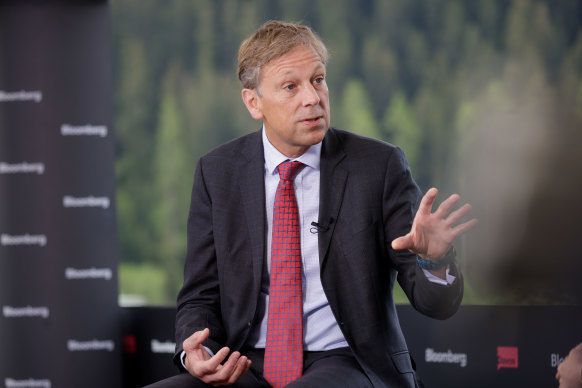Rio Tinto boss says he regrets ambitious emissions targets

Save articles for later
Add articles to your saved list and come back to them any time.
Rio Tinto’s boss Jakob Stausholm has admitted he regrets the company’s ambitious emission reduction targets, doubling down on comments about the feasibility of moving to renewable energy at the pace expected.
“There have been a lot of strong statements made [about the energy transition], but I don’t think people have realised and accounted for the process of getting the land, the cultural clearings and then executing the project,” Stausholm told a business breakfast in Perth on Friday.
Rio Tinto CEO Jakob Stausholm says he stands by the comments made at the World Economic Forum in Davos earlier this year.Credit: Bloomberg
He said the global miner remained committed to its multi-billion dollar plans to reduce emissions across its assets by 15 per cent come 2025, to halve its carbon footprint by 2030 and reach net zero by 2050.
But he doubled down on comments he made about the world “fooling itself” on the timeline, warning the miner would need to make hard decisions over the next 12 months if it were to overcome the challenges to sourcing clean power in Australia and curb its “huge carbon footprint”.
And he said space, the negotiation of land deals with traditional landowners and the time required to execute projects of the scale required were chief among them.
“We’re committed to addressing climate change, but you need to be realistic about what it takes,” he said.
“I continue to stick to the targets set, but in hindsight, I probably regret that I set a target for 2025 and 2030.
“We will reach our targets, but it is going to be hard and we will have to make hard choices this year.”
He reflected on the scale of the operation required to shift Rio Tinto’s aluminium refineries and smelters in Queensland and New South Wales to renewable energy, assets which make it one of the nation’s top carbon emitters.
Rio established a 34-megawatt solar farm spanning more than 105 hectares in Western Australia’s Pilbara region to partially power its $4.5 billion Gudai-Darri iron ore mine.
But Stausholm said the miner’s manufacturing assets on the eastern seaboard would demand something far more significant.
Rio Tinto’s emission reduction commitment is still far less aggressive than the strategy adopted by Andrew Forrest’s Fortescue Metals Group, which has vowed to reach net zero emissions by 2030.
Competitor BHP has committed to slashing emissions by 30 per cent in that time.
Stausholm stressed the value of Australia’s relationship with its biggest trade partner on the back of his March trip to China, saying he had seen a genuine interest in deepening the country’s ties long-term.
He also conceded the company would need to have impeccable environmental, social and governance credentials if it were to regain its standing as a leading operator, referencing the reputational damage done by the destruction of rock shelters at Juukan Gorge and its “confronting” report on workplace culture.
The comments echoed that of company chair Dominic Barton at Rio’s annual general meeting on Thursday, who defended activists demanding the global miner up its game on ESG issues.
The Morning Edition newsletter is our guide to the day’s most important and interesting stories, analysis and insights. Sign up here.
Most Viewed in National
From our partners
Source: Read Full Article
